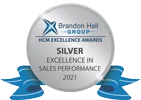6 Tips to Increase Your Voicemail and Email Response Rates

If you cringed a bit when you read that title, chances are you’ve self-diagnosed as a serial message-leaver. In any industry – but especially in sales – waiting for prospect or customer responses can be an excruciating process. Not only is the sale often hanging in the balance, so is your pride. This is especially true once you believe that you’ve established rapport with your prospect. How could they possibly be so rude to ignore you?!
After you’ve quadruple-verified that the email was in fact in your “Sent Mail,” and the phone number you were given is legit, here are a couple of stats to ponder:
- A survey by eVoice, a provider of virtual phone services, found that only 33 percent of people listen to voice mail from business contacts. Only 18 percent listen to voice mails from numbers they don’t know. Identify weaknesses within the team and get to the root of problems.
- According to a report from management and consulting firm, McKinsey & Company, corporate workers spend nearly one-third of their time managing email.
To put this information in perspective, on the seemingly off-chance that your prospect is even listening to your voicemail, what are the chances that they will take the time to actually respond? And though it appears that your email may have a greater chance of seeing the light of day, who’s to say it will actually get opened or read?
If you aren’t laser-focused on what you need to achieve with your communication, hold off until you are. Being vague or indirect or the “just wanting to touch base” message does not incite response.
Best Practice #1: Make Your Message Concise
Here is a good rule of thumb: studies show that a voicemail over 45 sec. will get tuned out, skipped, or deleted. We don’t agree. We challenge you to keep it to 30 sec. If you know exactly what your purpose is, you should be able to spit it out clearly and quickly.
The same goes for emails. No one wants to read a short story; they want to know what your point is – pronto. So cut the fluff and capture their attention with something relevant and engaging.
Best Practice #2: Subject Lines are Your Best Sales Tool
Research shows that there are a series of decisions a user makes when they receive an email; the first of which is, will they even open it? They will look at whom it’s from and then they’ll look at the subject line. If you don’t have the first one going for you, the subject line becomes even more critical.
Last time you checked, you were a salesperson, correct? So think about the way you’d sell in person – do you have a thought-provoking question or lead-in statement? Something that agitates a pain point and gets a reaction? There’s your subject line.
If you have established rapport, what about a conversational headline e.g., Our last phone call got me thinking… or something else that could pique interest without appearing too “salesy.”
Best Practice #3: Once They Bite, Keep ‘Em Hooked
Back to what research shows about the series of decisions involved with email…once they’ve opened the email, you want them to actually read what you have to say. And this goes back to knowing exactly what the purpose of your communication is – communicate that up front.
Know the decision points you’d like them to consider and make sure your message is aligning toward the positive decision making. Keep your writing concise and easy to understand.
Best Practice #4: Let Your Personality Shine Through…sort of
We talk a lot about adjusting your communication style to mimic that of your customer – however, that’s when you have the benefit of live interaction. When you’re leaving a message or writing an email, that’s not the case.
So when you’re crafting your email or leaving a VM, be acutely aware of your tone. You want to be upbeat, but not too perky, as that could be a turnoff for some people (think multiple exclamation points and a smiley face). You want to convey warmth and excitement with both spoken and written word. Don’t be dull or short, but don’t go overboard with flowery language. Keep things professional until you’ve established rapport and know with what style your customer prefers to communicate.
Best Practice #5: Clearly Establish Follow-up Steps
The worst thing you can do is get your prospect to open your email, entice them to read through it, and then not let them know exactly what you want them to do next – call you back…email you back…click the link you provided to sign up for a webinar…send you available call times next week…
Even if you lead with the reason for your contact (the benefit to them) close your message with a reminder for how the benefit will ultimately be realized. If you want them to do something, make sure it’s the last thing you reiterate before you close.
Best Practice #6: Leave Your Contact Info…and then leave it again
We lied when we said the worst thing you can do is get your prospect to open and read your email, or listen to your VM, and then not tell them what you want them to do. Worse still, is to do all of those things and then not provide a simple way to reconnect with you.
With voicemail, tell them your phone number, and then repeat it – slowly. If you don’t, and they couldn’t grab a pencil fast enough…you’ve been deleted and they’ve moved on. With email, be sure that every message closes with your contact info in plain sight. If you don’t want your entire email signature to follow each interaction, create a simple one that will appear on responses only. Whatever you do, do not rely on previous interactions and assume they already have your info. If you make them go routing through old emails for your number, that’s another chance to lose their attention and, ultimately, the sale.
The important thing to remember is to try not to get discouraged or to take things personally. People are BUSY. And in today’s world of constant communication, your customers are barraged with messages, tweets, notices, and calls nearly 24/7. It will just take some work to cut through all that clutter. Keep experimenting until you find what works for you.

- Account Planning (12)
- Awards (44)
- Client Testimonial (37)
- Personal Branding (21)
- Podcast (12)
- Research (78)
- Sales Career Development (90)
- Sales Coaching (166)
- Sales Consulting (141)
- Sales Culture (180)
- Sales Enablement (382)
- Sales Leadership (116)
- Sales Management (267)
- Sales Negotiation (14)
- Sales Prospecting (138)
- Sales Role-Playing (19)
- Sales Training (243)
- Selling Strategies (281)
- Soft Skills (78)
- Talent Management (101)
- Trusted Advisor (29)
- Virtual Selling (57)
- Webinar (13)






















